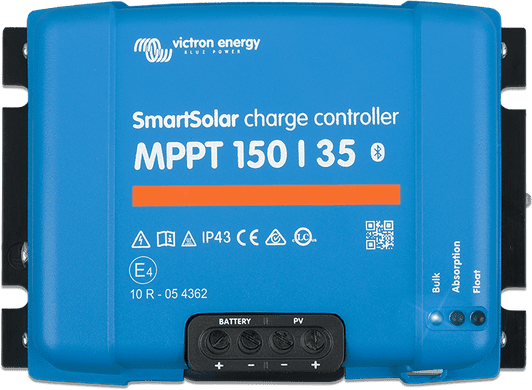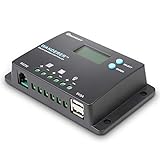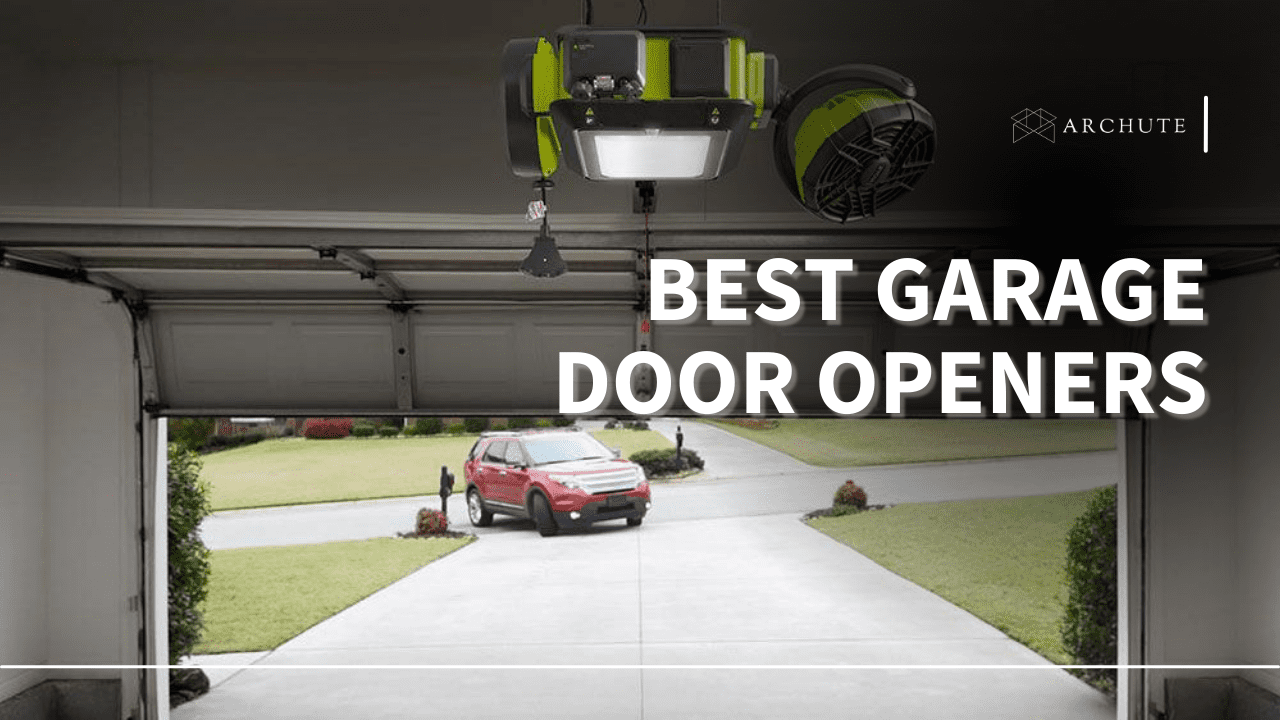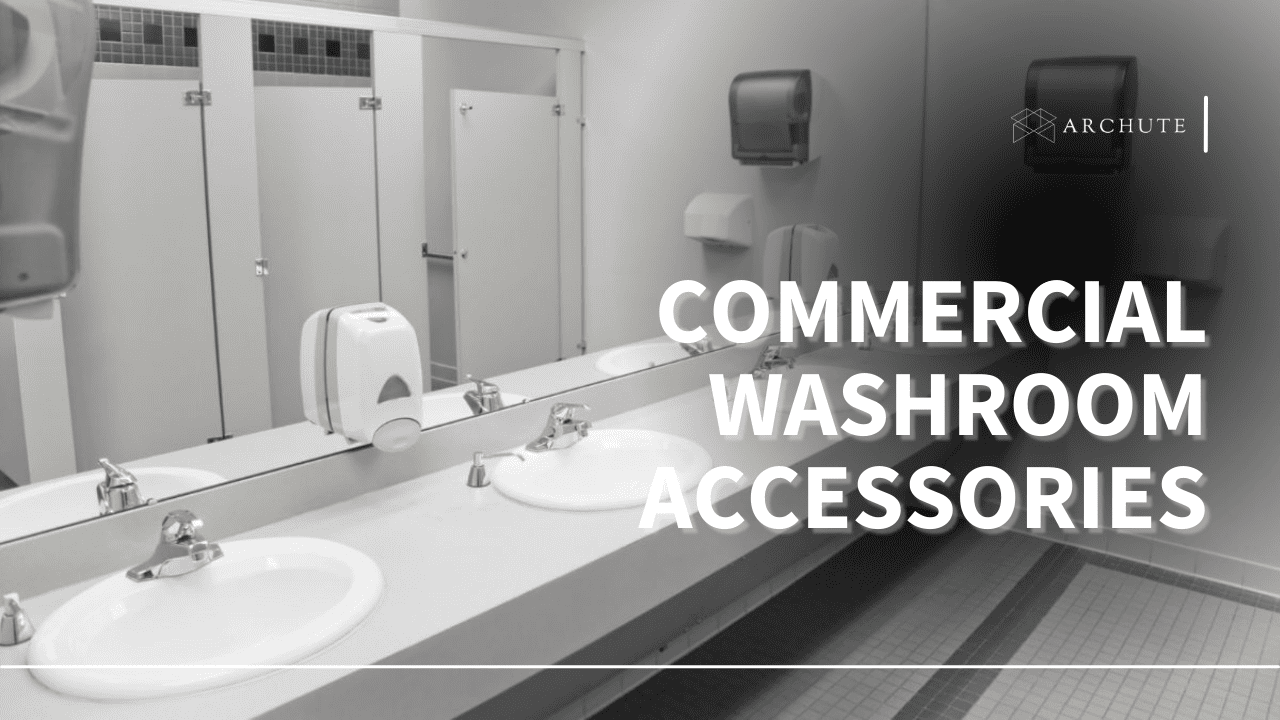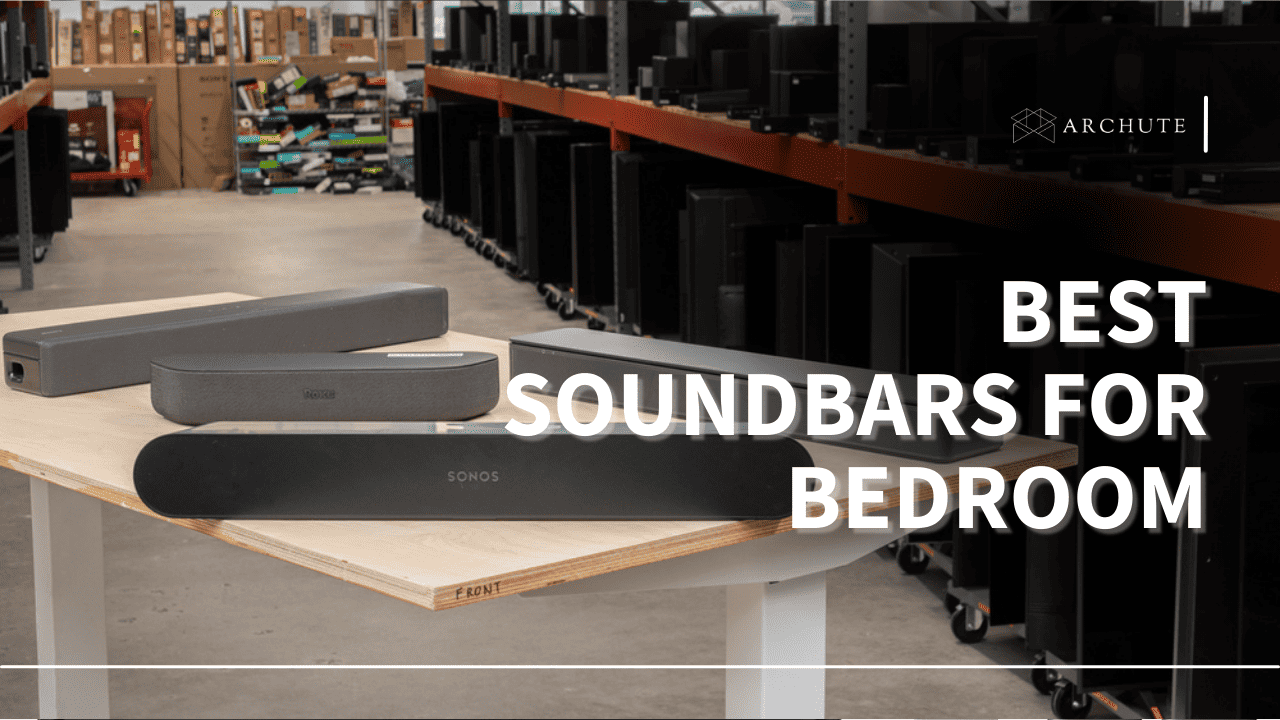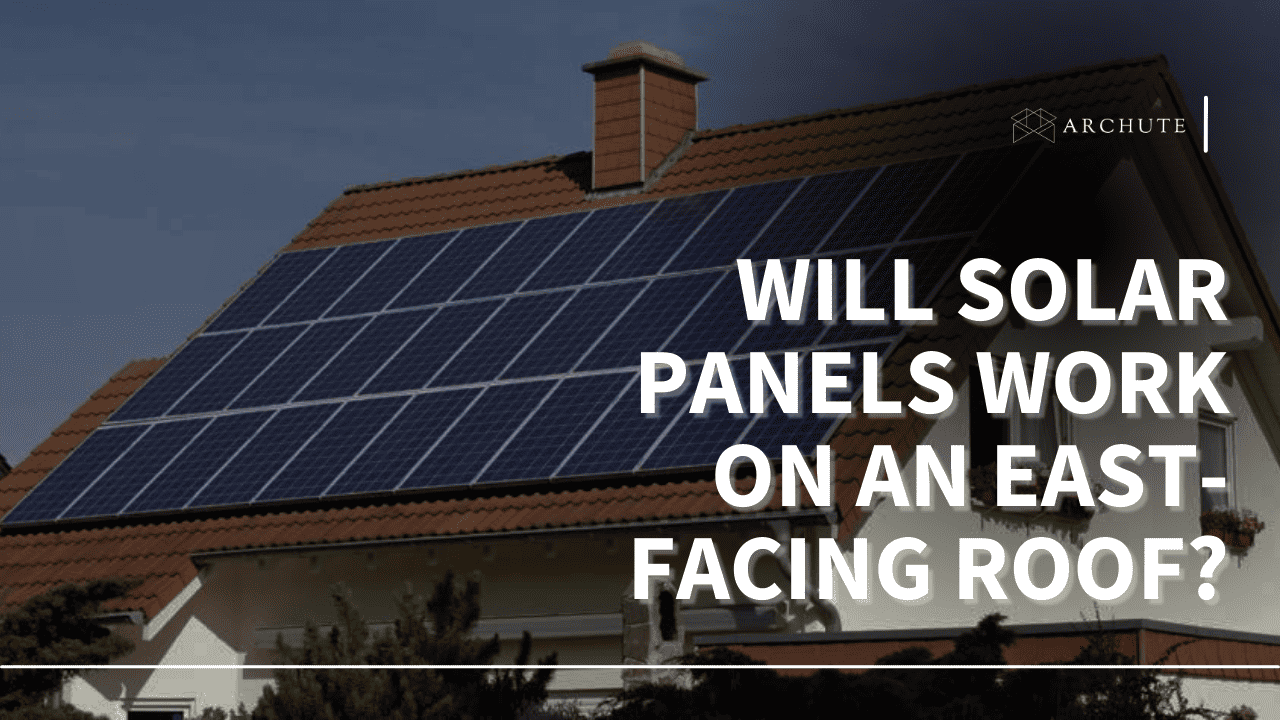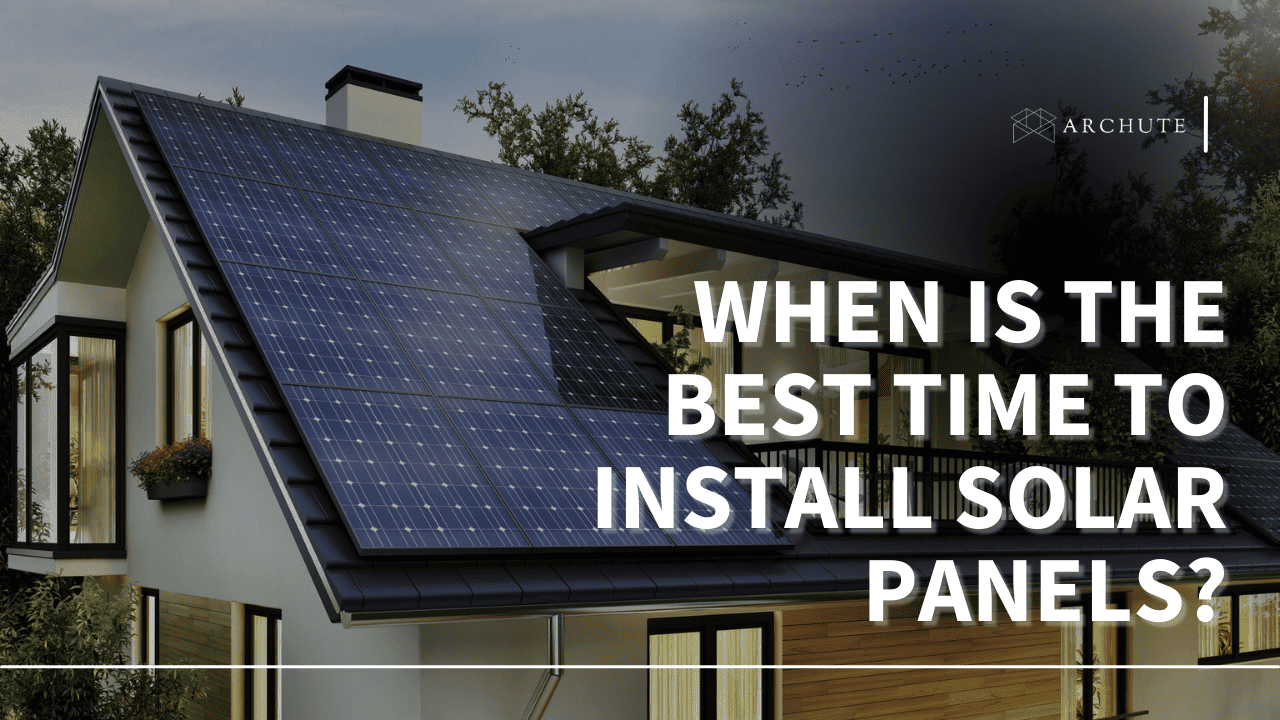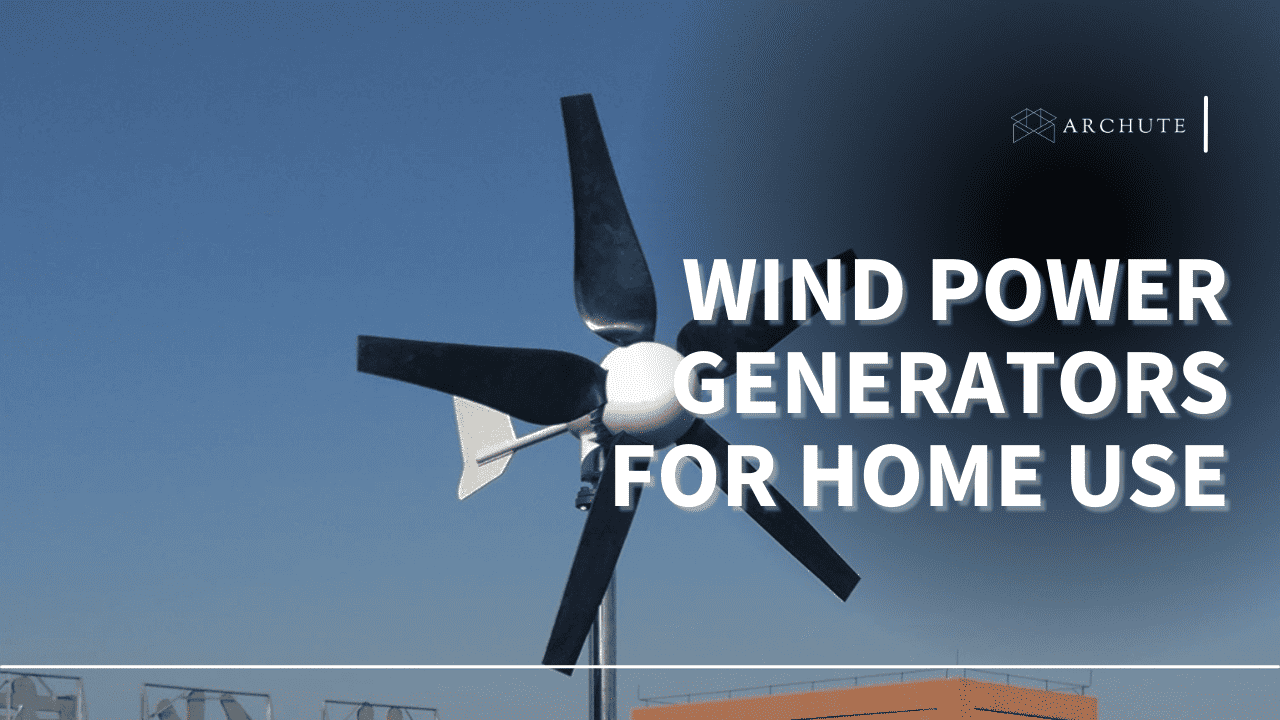Solar energy – it’s the future! It's renewable, cheap, and you can use it to power an entire house! That said, since it’s a power supply system, it has many different and delicate components. Usually, you just leave the whole process to a professional service provider. However, in some cases, you are short on cash, or an expert is not always available to arrive on time. In this case, it's right for you to start learning about the crucial aspects of an excellent solar array system.
In this guide, we go in-depth into some of the best MPPT charge controller reviews that you should consider. When you have one of these chargers, you are sure of enjoying quality charging results each time. These charges can protect against issues such as overcharging, and some even come with temperature indicators.
To learn more about these products, get inside this in-depth guide:
1. Top Pick: EPEVER 40A MPPT Solar Charge Controller 12V 24V Auto
- Negative Ground Controller featuring advanced MPPT technology...
- MPPT Charge Controller protection built-in against reverse...
- 40A Solar Charge Controller charging process has been optimized...
- Solar Controller MPPT support PC software,APP and MT-50. Auto...
- MPPT Controller 40a with blackligh LCD screen for displaing...
The Honda EU2200i is probably the most all-round portable generator we've seen. It has all the right specifications that make it a well-balanced generator that would be perfect for any tailgating party. If the 120cc engine and the 1800W power rating took you by surprise, then you're in for a wild ride with the EU2200i.
Weighing in at a mere 47 pounds, this is one of the lightest portable generators you can find on the market. Not only does this mean you'll have an easy time moving it around, but it also means that it will leave you with enough room in the trunk of your vehicle to stock even more supplies for the tailgating party.
In addition, while the 120cc engine is powerful, it doesn't really sacrifice on noise levels. The Honda EU2200i has noise levels of around 48 dB which is great news for tailgaters who simply want to relax and enjoy the company of their friends.
As you may have already guessed, the EU2200i is an inverter type of generator, and this explains why it has very low noise levels. Apart from being quiet though, it also conserves fuel better than other generators in its category thanks to Honda's Eco Throttle system which can give you runtimes of between 3 to 8 hours
Pros:
Cons:
2. Editor’s Choice: Outback Flexmax 80 FM80 MPPT 80 AMP Solar Charge Controller
- OUTBACK 80AH MPPT CHARGE CONTROLLER
Enjoy high-quality power when you have the Outback Flexmax 80 FM80 MPPT Solar Charge Controller. This unit is programmable to charge battery voltages that range from 12VDC to 60VDC.The Outback FM80 Solar Charge Controller is a top choice when you want high performance, efficient and versatile charging for your power system. Its features include support for an extensive range of nominal battery voltages and the ability to step down a high-power voltage.
Also, the inclusion of an inbuilt backlit 80-character display which shows the current charge status, and also tracks system performance data with the touch of a button. Moreover, the system features a ground break MPPT algorithm, which is both continuous and active. This will help improve the photovoltaic array power yield, by well over 30%.
Even more, the advanced continuous maximum power point tracking increases the PV array output to 30%. Moreover, this unit also features a backlit 80-character display, which will show the current operational status.
You will also be pleased with the input PV voltages of up to 150VDC open circuit, for charging different types of battery banks. With such a diverse array of charging features, this unit lets you get more amp hours from your solar panels to battery each day. Thanks to the inclusion of Active Cooling and Internal Thermal Management cooling, this unit operates at its full rating, at high temperatures of as much as 104F (40C).
Pros:
Cons:
3. Runners Up: Victron BlueSolar 12V Or 24V MPPT 100/50 Charge Controller - 50 Amps / 100 Volts
- Ultra-fast Maximum Power Point Tracking (MPPT)
- Advanced Maximum Power Point Detection in case of partial shading...
- Load output on the small models
- Battery Life: intelligent battery management by load shedding
- Automatic battery voltage recognition
With the Victron BlueSolar 12V MPPT charger, you have a powerful and reliable way to charge your solar machine. The charger comes with ultra-fast MPPT, perfect use even in a clouded sky, or when the light intensity changes constantly. Even more, the ultra-fast MPPT design will enhance the energy harvest by well over 30%, as when compared to PWM charge controllers.
You will also appreciate the fact that this unit can prevent over-discharge of the battery by connecting all loads to the load output. The load output will remove the load when the battery has been discharged to a specific voltage level. Also, an intelligent battery management can be chosen for your convenience. The rugged and robust design of this unit also means that it can handle anything that you throw at it. The exterior finish is durable, and will provide years of reliable performance.
As one of the best charge controllers on the market, this unit also offers several ease of use features. Yes, that`s right! Its one of the simplest digital power supply tools to use on the market today. What a way to enjoy solar power today!
The load output is short circuit proof, which ensures your devices are safe from damage. When a solar charger is not able to recharge the battery to its full capacity with one day, the results are often bad. The battery fails to charge correctly. This mode of use might eventually destroy a lead-acid battery. For this reason, this charger comes with a Battery Life Algorithm, which will monitor the state of charge of the battery.
Pros:
Cons:
Also Remember
4. Renogy Wanderer 10 Amp 12V/24V PWM Negative Ground Solar Charge Controller
- 【12V/24V Automatically Detect】Automatically detects 12V or...
- 【Smart 4-Stage PWM Charging】Smart 4-Stage PWM charging (Bulk,...
- 【Compact in size】Which makes it easy to install virtually...
- 【Multiple battery adaptation】 Deep Cycle Sealed (AGM), Gel,...
- 【Wanderer10A|30A Installation Notes】 The default starting...
Improve the longevity of the battery when you get the correct charging resources. A good example would be the Renogy Wanderer 10 Amp Charge Controller. This Charger is optimized for a 12v/24v system, and many types of batteries. These include the deep cycle sealed, gel, flooded, and lithium-ion battery options. Similar to all the high-end batteries you will find on the market, this unit can support smart 4 stage charging. These include bulk, boost, float, and equalization procedures. Such a unique approach helps improve battery life and system performance.
Moreover, the charge controller features a backlit LCD screen that displays various key metrics. These include the system operation, diverse load control, and error codes. The charge controller also features integrated 5V 2A USB ports that you can use to charge devices. Compact in size, this unit is easy to install virtually anywhere. The LCD has a simple design, which makes it easy to use and to notify users of battery information. It's an advanced charge controller that is perfect for off-grid solar applications. Best of all, it's compact, which makes it easy to install.
Capable of charging and over-discharging lithium batteries, this unit is perfect for different types of charging. The Renogy brand has even done well to include It even has an integrated RS232 port, which provides easy communication and with a convenient Bluetooth module.
Pros:
Cons:
5. WindyNation P30L LCD 30A PWM Solar Panel Regulator Charge Controller
- WindyNation P30L PWM 30 amp solar charge controller prevents...
- Electronic protection: overload, short circuit, and reverse...
- LCD digital display provides system information (amperage,...
- Battery temperature sensor (BTS) is included. See photo gallery.
- System settings are user adjustable by using the MODE and UP and...
Discover the excellence of the WindyNation P30L LCD 30A PWM Solar Charge Controller, which offers several benefits when in use. The charge controller will prevent your battery from overcharging and damage from a solar panel. It's ideal for both 12- and 14-volt batteries. You will also find it easy to configure for AGM, lead-acid, and other battery types.
To make things better, the charger comes with all the electronic protection functions you would expect. These include overload, short circuit, and reverse polarity protection functions. Thanks to the inclusion of an LCD, you will find it easy to access system information. This includes information such as amperage, voltage, temperature, and load control. For even more convenience, this unit features a battery temperature sensor, to inform you of overcharging issues.
With such a unique diversity of features, it's easy to see why this unit can suit many different applications. These include a charge controller for your RV, boat, small cabin, or any small off-grid installation.
Pros:
Cons:
6. EPEVER MPPT Charge Controller 20A 12v 24v Auto, Solar Panel Regulator
- MPPT Charge Controller: High tracking efficiency > 99.5% Peak...
- Solar Controller Mppt:12V/24V DC Auto identifying. Rated input...
- User programmable for 3 battery types: Sealed, GEL, AGM and...
- MPPT controller: Multi-function blackligh LCD displays, support...
- Solar charge Regulator has Multiple load control method: manual...
Designed to provide high tracking efficiency and peak conversion levels of over 99%, this charge is perfect for your needs. It can accurately recognize and track several power points easily. It’s a solar controller with a 100-520W rating to make it ideal for various applications. It is user programmable for as many as three different battery types. These include the sealed, GEL, AGM, and flooded battery types. The charger is also available with a negative ground and is compatible with lithium-ion battery charging processes as well.
To make things better, the MPPT controller comes with multi-functional backlight LCDs. Thus, you will find it easy to keep track of the system metrics and its performance. The charger even supports PC software and a remote meter for your convenience. The meter helps provide real-time data viewing, and also makes it easy to adjust the charger settings to suit your needs.
The best part about using this charge is that it will automatically identify the controller and show the type, model, and relevant parameter information. You will also be pleased with the fact that this charge controller will provide real-time energy statistics recording for your convenience.
Pros:
Cons:
7. ALLPOWERS 20A Solar Charger Controller Solar Panel Battery
- ►Rated Discharge Current: 20A; USB Output Voltage: 5V/3A;...
- ►Functionality: Equipped with industrial-grade STM 8...
- ►Mutiple Electric Protection: Over-current and short-circuit...
- ►Good Heat Dissipation: Dual mosfet reverse current protection,...
- ►Easy to Use: Comes with a display that can clearly indicate...
This list would not have been complete without the ALLPOWERS 20A Solar Panel Charge Controller. Why? Its because this unit also offers an exceptional range of power supply features for your convenience. For instance, the charger has an adjustable power rate, and with dual USB ports to make it convenient for your needs. More so, the charger features industrial-grade STM-8 microprocessors.
These help to control the charging and discharge process for your convenience. The MPPT charger also features a reliable battery to charge and discharge period management. The multiple electric protection functions on this unit are also exceptional. They include over current, short circuit protection, inverse connection protection, and overcharge protection.
The makers of this unit also seem to have an understanding of the importance of heat dissipation when charging your devices. Thus, this is why this unit supports a dual Mosfet reverse current protection, and low heat production performances as well.
It’s also easy to use, and comes with a display that will indicate the status and data required for its use. You can conveniently switch modes and parameter configuration for even customized charging results. Such a function makes this unit ideal for use in homes, commercial industries, and more.
Pros:
Cons:
8. HQST 30 Amp 12V/24V PWM Common Positive Solar Charge Controller
- 【Function】HQST 30 Amp solar charge controller is an...
- 【Intelligent regulator】12V/24V system voltages are...
- 【LCD screen】It provides a dot matrix graphic LCD screen and a...
- 【Comprehensive protection】The product provides overcharge,...
- 【Light control】When daylight begins the light source will...
Charging your solar batteries has never been this easy. Why? Well, the HQST 30 Amp Solar Charge Controller provides an excellent combination of machine features. For instance, the charger controller comes with an intelligent and multifunctional solar charge controller design. The system features dual USB ports for your convenience.
Also, the 12V/24V system voltages are easily recognized in this system. With temperature compensation available, you will appreciate that this unit automatically adjusts charging parameters. More so, a wide range of load working modes help facilitate the product application to many types of load. You can even rest the controlling parameters to help satisfy the specific needs of a user.
The makers of this unit have also done well to include advanced features for convenience. For instance, this unit has a dot matrix graphic LCD screen and a human-machine interface with a key. Such a unique design ensures machine operation in the interface is a convenient procedure.
You can also reset all the controlling parameters to suit your specific power supply needs. Equipped with light control, this charge is also highly convenient to use. When daylight begins, the light source may turn off, and the solar panels will charge the batteries. Plus, when there is no sunlight, the garden light will turn on for your convenience. It even features a 5V 1A USB output, which you can use to charge many types of devices. These include tablets, speakers, mobile phones, and more.
Pros:
Cons:
9. RICH SOLAR 20 Amp 12V/24V DC Input MPPT Solar Charge Controller
- Automatically detect 12V or 24V DC system voltages innovative mph...
- Die-cast aluminum design for heat dissipation and the capability...
- Charges over-discharged Lithium-Ion batteries. Error code...
- Compatible with various deep cycle battery options: Sealed, gel,...
- Bluetooth RS232 port allows to communicate with the BT-1...
Summarizing this long list of top products is the RICH SOLAR 20 Amp Solar Charge Controler. This unit is powerful and will provide various benefits when you use it correctly. For instance, the charger can automatically detect 12V or 24V DC system voltages, all thanks to the innovative MPH technology. The technology has high tracking and conversion efficiency levels of over 90%.
Even more, the die-cast aluminum design offers optimal heat dissipation benefits, and this unit can also measure the temperature of the battery. You will even be pleased with the fact this unit can perform remote monitoring and supports customized charging voltages.
Plus, the charge is compatible with many types of deep-cycle options. These include the sealed, gel, flooded, and lithium-ion battery types. For electronic protection, this unit offers many benefits. It can protect your device from over-discharging, overcharging, short-circuiting, and overloading. The battery also offers reverse protection for any type of solar module, and without causing damage to any component. The charger also supports 4 stage charging functions, including bulk, boost, float, and equalization functions.
Thanks to the convenient LCD, this unit makes it easy to customize the charging paraments to suit your specific device.
Pros:
Cons:
Factors to Consider When Buying an MPPT Charge Controller
When selecting a solar charge controller, the key factors to consider include:
- The system voltage
- The system array current ( Imp and Isc)
- The type of battery
The type of battery maintainer you purchase depends on the specific use case, and it’s a tradeoff when it comes to maximizing battery longevity. Also, PWM controllers are affordable.
They are also suitable for use in small wattage solar electric systems. Additionally, their efficiency is the same as MPPT solar panel battery charges in hot climates. Choosing the incorrect charge controller can lead to as much as 50% of loss in power in a portable panel.
It’s a common mistake that owners of RVs or even campers make. They for a high voltage solar panel at the most affordable cost per watt. Then, they connect this solar panel to a PWM charge controller, and this leads to the loss of well over 50% of the power available.
What is An MPPT Charge Controller
MPPT is an acronym for Maximum Power Point Tracking. It’s a feature that lets the input power of an MPPT controller be equal to the output power.
Thus, if a solar array has an output voltage of (18V, 48V) is higher the level of battery storage which is usually 12Volts. An MPPT controller will bring it down to 12V but will address the decrease by increasing the current level. This way, the power level remains leveled.
Since you won't lose the power produced from the solar, the MPPT controllers let you connect several panels in series. Such an approach helps improve the total voltage level of the panel without losing any precious solar power.
The main goal of using MPPT is to ensure the solar panels maximize their performance. To be specific, the charger ensures the solar panel can function at optimal current and voltage levels. The term for this is “maximum PowerPoint.”
More so, the MPPT charge controller also works to convert the solar produced voltage, into optimal voltage. This provides optimal charging current for the battery. More so, the main goal of a solar charge controller is to prevent the system from losing the solar produced power. Plus, it also helps to get maximum power from the solar panel, which is connected in series.
The other benefit of an MPPT system is that it helps reduce the amount of wires and sizes required to connect the panel to a controller. This is due to the broad input voltage range, which lets you connect several panels in series. Such a unique connection helps improve the voltage, but the level of amps stays constant.
MPPT controllers are also affordable than PWM models but are highly efficient when it comes to regulating the charge. Remember to consider this aspect when you want a suitable charge controller for your needs. They all have indications which make them easy to identify.
Charge Controller Sizing
The primary task in sizing a charge controller is to determine its voltage and current levels. Then, use these metrics to choose the correct charge type. Above all, you should also consider the type of charge regulator that would be suitable for your system. This way, you won’t have to pay more money than the amount you require.
Furthermore, you also won’t have to purchase a device that could lead to poor system performance. Or even worse, it may even cause damage to the other components in your system. The best safety factor level to consider would be one that averages at 1.25. By this factor, the maximum input voltage and current of the charge controller increase significantly. Thus, the charge can adjust and meet the sporadic increases in voltage and current due to increased temperature levels.
Commonly Made Mistake During Charge Controller Installation
At this point, it would be good to assume that you have found the correct type of charger and size for your off-grid power supply needs. The next step is to connect it to the system with other components for power supply. Just you should know, wires and connections are a crucial aspect of every solar system today. Here are the common factors to consider when you want to plug in your charge controller:
- You should only connect DC loads to the charge controller`s output. The AC loads are only to be connected to the output of the inverter.
- Also, specific appliances such as low voltage electronic devices should be connected directly to the battery
- In a small DC system that has a charge controller, the only fuses you will need is the one integrated into the charge controller. More so, in the large DC systems, you may have to get a fuse on the positive terminal of the battery.
- You should always mount the charger close to the battery. It's important because the system requires accurate measurements of the battery voltage for optimal functionality. Thus, even a slight drop in system voltage should be stopped at all costs.
- The conventional charge controller features three terminal connections. These include connections for the battery, DC connections, and for the array. At this point, the role of the charge controller disconnects the battery to stop overcharging. More so, it also disconnects the DC loads that are connected to the controller, to prevent any over-discharging issues.
- Each appliance that is connected directly to the battery rather than the “DC load” terminal of the charge controller has a notable side effect. It causes the battery of the over-discharging function of the charge controller to become useless.
- You should connect the inverted directly to the “DC load” terminal that is on the charge controller
- When connecting an inverter to the charge controller, remember to consult the charge controller data manual. Search for information on the charge controller power, and whether its capable of powering the inverter. If not, then connect the inverter with the high-power rating to the battery directly. In such an instance, this will cause the over-discharging function to become useless.
Remember That
Sometimes we are all forced to shop on a budget. However, this should not be the case when you want to purchase a solar charge controller. The cheap charge controllers have a low current “DC load” terminal. Thus, their only goal is to stop any over-discharging issues that may occur on the battery.
You may only be able to connect a low power 12V lamp or any other device with the same power level to this terminal. At such a point, the terminal might switch off, to help stop over-discharging issues on the battery. If this is the case, consider connecting the rest of the components directly to the battery. Why? Well, its because there is no way to disconnect these loads from the battery when over-discharging issues occur.
Finally
When you have a solar array or panel at home, you should know of the importance of using it the right way. In this guide, we have identified some of the best MPPT charge controller reviews on the market for you to consider. When you have information on one of these products, you will enjoy exceptional charging performance each time. Not only will your panels charge efficiently, but they will also be safe from various issues. These include problems such as overloading, over-discharging, and more.
Thus, it’s crucial that you learn about the specific type of charge which is suitable for your panel. This way, you can charge your devices safely and with optimal efficiency levels.

